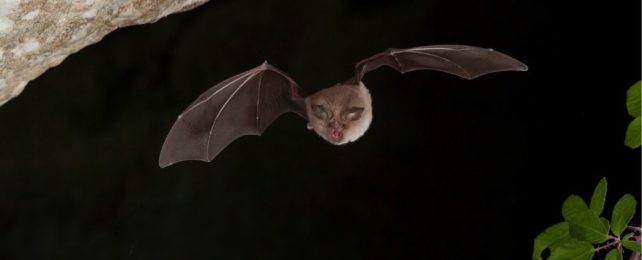A novel coronavirus found in Russian bats has scientists calling for an urgent effort in generalized vaccine development. Otherwise, they caution, another pandemic might be triggered by a deadly animal virus spilling over to humans.
Similar to SARS-CoV-2, the new respiratory virus discovered among bats, known as Khosta-2, is covered in spike proteins that can infect human cells using the same entryways.
Even more problematic is its apparent resistance to monoclonal antibodies and serum induced in recipients of the COVID-19 vaccine.
In other words, this new respiratory virus cannot be neutralized by our current medicines.
Not even antibodies developed from the omicron variant were effective against the bat virus, despite the fact that both pathogens belong to the same group of acute respiratory coronaviruses, known as sarbecoviruses.
"Critically, our findings highlight the urgent need to continue development of new, and broader-protecting sarbecovirus vaccines," the authors write.
When researchers in Russia first stumbled across Khosta-2 along with another bat virus, Khosta-1, in 2020, neither pathogen looked particularly dangerous.
Neither were closely related to SARS-CoV-2. In fact, they came from a distinct lineage that lacked some of the genes researchers thought were necessary to antagonize the human immune system.
Upon closer examination, however, experts have identified some worrisome traits in Khosta-2.
In the lab, this bat pathogen was able to use the angiotensin-converting enzyme 2 (ACE2) receptors on human liver cells to infect tissue in much the same way as SARS-CoV-2. The receptor binding domains on its spike proteins also showed complete resistance to the monoclonal antibodies triggered by the COVID-19 vaccine.
"Genetically, these weird Russian viruses looked like some of the others that had been discovered elsewhere around the world, but because they did not look like SARS-CoV-2, no one thought they were really anything to get too excited about," explains virologist Michael Letko from Washington State University.
"But when we looked at them more, we were really surprised to find they could infect human cells. That changes a little bit of our understanding of these viruses, where they come from and what regions are concerning."
Khosta-2 was found in Russia's Sochi National Park among lesser horseshoe bats (Rhinolophus hipposideros), which is a species also found in Europe and North Africa.
It's not yet clear if the virus that infects these bats can spill over to humans in the real world, but initial findings in the lab suggest it's certainly possible.
If the Khosta-2 virus co-infects a host with another coronavirus, there's even a chance the two viruses may recombine into a whole new variant.
While Khosta-1 was not able to infect human cells on its own in the lab, when a protein-eating enzyme was artificially added to the scene, the virus was suddenly able to gain entry to human cells using a different gate.
"[T]hese findings collectively suggest that some coronaviruses may infect human cells through a presently unknown receptor," the authors write.
"Sarbecoviruses have been shown to co-circulate in bats, so this variation in receptor usage among closely related viruses may even represent an evolutionary strategy for viral persistence within the reservoir host population."
Obviously, that's not a good thing. If this viral reservoir spills over to humans, our current coronavirus vaccines that mainly focus on the ACE2 receptor may no longer ward off infection.
In the lab, when the receptor binding domains on a SARS-CoV-2 virus were replaced with Khosta-2 binding domains, serum from vaccinated individuals was less effective at neutralizing the pseudovirus.
"Right now, there are groups trying to come up with a vaccine that doesn't just protect against the next variant of SARS-2 but actually protects us against the sarbecoviruses in general," Letko says.
"Unfortunately, many of our current vaccines are designed to specific viruses we know infect human cells or those that seem to pose the biggest risk to infect us. But that is a list that's everchanging. We need to broaden the design of these vaccines to protect against all sarbecoviruses."
The faster we do so, the better chance we have at holding off another deadly coronavirus outbreak.
The study was published in PLoS Pathogens.
